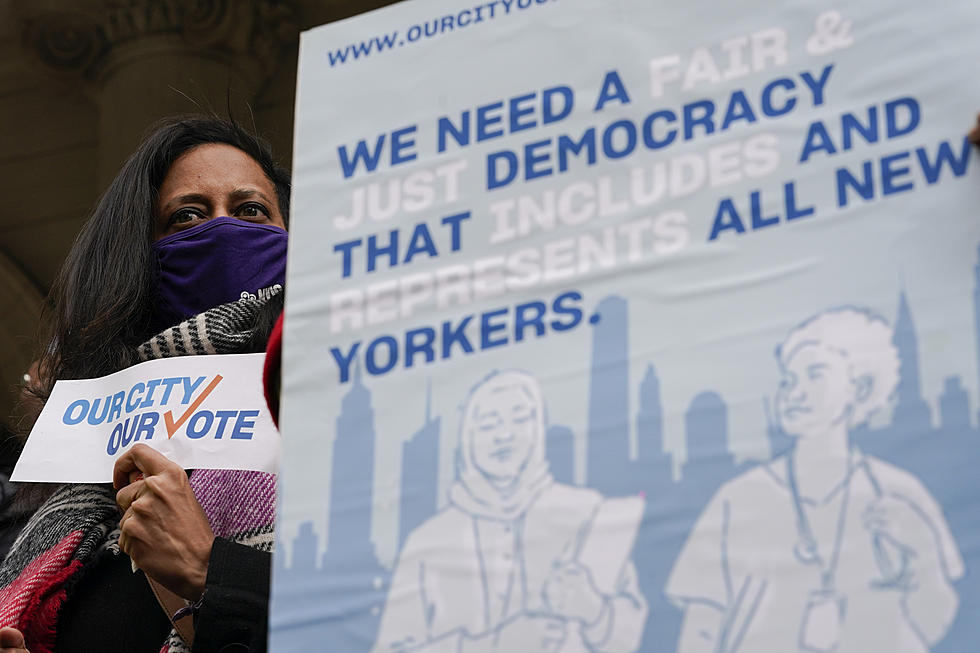Immigration in NJ: What these immigrants want you to understand
For Monica from Chille, it's a given. New Jersey is a place where immigrants have opportunities — but where they also face struggles. The Hudson County resident, sitting in an office in Newark, said it's a place where someone trying to get ahead can face skepticism and discrimination.
Four hours later, Kamal Khanna — who arrived in the U.S. more than 50 years ago from India — sat in his well-appointed home in West Windsor. He runs his own business. His wife is a doctor. He's been a West Windsor councilman — just the second Indo-American immigrant elected to office in New Jersey — and hopes to soon be mayor.
"You can't do that if there is discrimination," he told New Jersey 101.5.
There is no immigrant experience in New Jersey; there are countless immigrant experiences, each as unique as the people who bear them.
New Jersey is home to one of the nation's largest Indian immigrant and Indian-American populations. But that wasn't the case when Khanna arrived in 1965. He's seen newer arrivals flock to neighborhoods where they can remain comfortable alongside people who speak like one another, who dress like one another, who eat like one another. They don't assimilate as easily as he did, Khanna said.
And he argues, if you're going to be in a country, "you have to really be in it."
Monica, from Chille, said that's more of a struggle than some people know.
"We're very rooted in our language, in our customs," she told New Jersey 101.5 through a translator. "I do speak basic English. I speak it at work, and I practice it often with my children. But because of our status here, it's hard to get access to scholarships, or to even have time.
"We work so many hours, and we work so hard, it's hard to find time to study. I'm 54 years old now, and I haven't been able to continue my studies now."
Johanna Calle came to the United States from Ecuador with her in the fifth grade, as an undocumented immigrant. She was in the top 10 percent of her high school class, but struggled to make arrangements to go to college, to get financial aid.
Her mother remained undocumented until just a few years ago. Calle lived culturally as an American, but always worried her family would be caught. Years later, she became an American citizen — and as program coordinator at New Jersey Alliance for Immigrant Justice, advocates for immigrant families like hers.
She argues immigration laws have gotten tougher — making it harder for would-be legal residents and would-be citizens to follow the prescribed path.
"Nobody wants to live under the shadows and be afraid that their family is going to be separated," she said.
Their stories and others are told in the video above, and in New Jersey 101.5's recent series on Immigration in New Jersey.
Where NJ's immigrants come from
Zoom in and click on a town to see the geographic breakdown of where its immigrants come from as well as that town's top immigrant nationality. The towns are color-coded based on the region of the world where most of the immigrants come from: Yellow for Latin America, green for Asia, blue for Europe and red for Africa. In some cases, the top nationality differs from the top region.
Best viewed on a desktop computer.
Source: U.S. Census 2010-2014 American Community Survey 5-year estimates
Where NJ immigrants live
Zoom in and click on a town to see how many immigrants make up the population. The brighter the red, the greater the percentage of foreign-born residents. Map is best viewed on a desktop computer or on our app. The map is based on Census population estimates, so numbers may not be exact.
Source: U.S. Census 2010-2014 American Community Survey 5-year estimates
— With maps by Sergio Bichao, and prior reporting by Sergio Bichao and David Matthau
More from New Jersey 101.5:
More From New Jersey 101.5 FM









